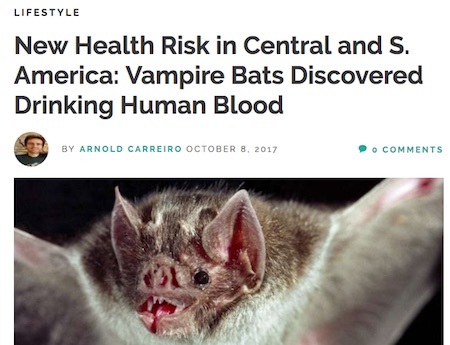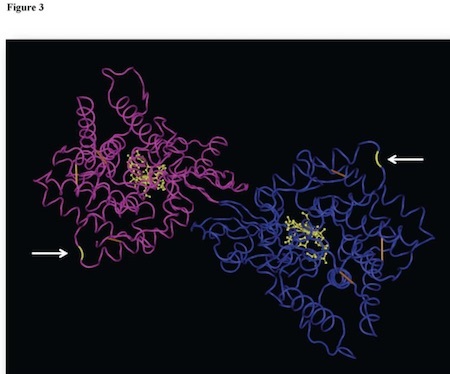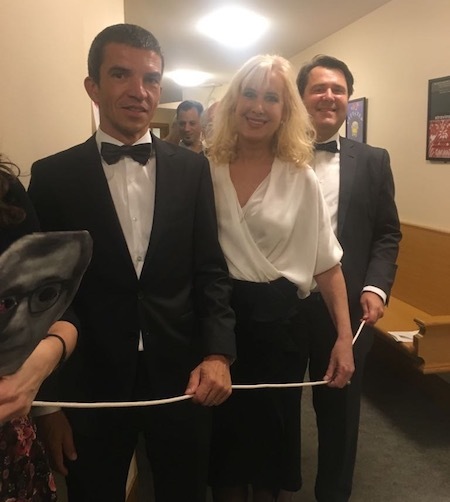Marc Abrahams's Blog, page 208
October 12, 2017
Coffee Intake and Incidence of Erectile Dysfunction [research study]
A new study about erectile dysfunction suggests — and also does not suggest — that drinking decaffeinated coffee ups a person’s risk of having erectile dysfunction, especially if the person is a male. The study is:
 “Coffee Intake and Incidence of Erectile Dysfunction,” David S. Lopez, Lydia Liu, Eric B. Rimm, Konstantinos K. Tsilidis, Marcia de Oliveira Otto, Run Wang, Steven Canfield, and Edward Giovannucci [pictured here], American Journal of Epidemiology, epub 2017).
“Coffee Intake and Incidence of Erectile Dysfunction,” David S. Lopez, Lydia Liu, Eric B. Rimm, Konstantinos K. Tsilidis, Marcia de Oliveira Otto, Run Wang, Steven Canfield, and Edward Giovannucci [pictured here], American Journal of Epidemiology, epub 2017).
The authors explain: “We investigated the association of coffee intake with incidence of ED [erectile dysfunction].”
The authors tell how they did that: “A prospective analysis of 21,403 men aged 40-75 years old was conducted… Total coffee, regular and decaffeinated coffee intakes were self-reported on food-frequency questionnaires. ED was assessed by means of questionnaires in 2000, 2004 and 2008….”
Then the authors tell what they identified: “No significant differences were identified for incident ED after comparing highest (≥ 4 cups/day) with lowest category (0 cups/day) of total and regular- coffee intakes.”
The study includes, also, an observation that non-expert readers might find disturbing: “For decaffeinated coffee intake, after comparing the highest category with lowest category, we found a 37% increased risk of ED…”
But those same non-expert readers, if they have taken worry, might find some comfort in a sentence that occurs farther down in the paper: “Overall, long-term coffee intake was not associated with risk of ED in a prospective cohort study.”
CAUTION: One should remember the maxim that “correlation does not imply causation.” In the case of this study, it is possible to conclude, if one is incautious, that erectile dysfunction causes men to drink decaffeinated coffee.

TV commercial ‘zapping’ – its driving factors (study)
 If you’re in the business of advertising – especially TV advertising – you might be keen to identify the driving factors behind so-called ‘zapping’ (viewers changing channels with the specific intent of avoiding commercial breaks) A 2017 study in the Journal of Advertising Research presents an extensive analysis of the subject and pinpoints a ‘significant driver’ in such behaviour :
If you’re in the business of advertising – especially TV advertising – you might be keen to identify the driving factors behind so-called ‘zapping’ (viewers changing channels with the specific intent of avoiding commercial breaks) A 2017 study in the Journal of Advertising Research presents an extensive analysis of the subject and pinpoints a ‘significant driver’ in such behaviour :
“The use of remote controls emerged as a significant driver of observed commercial zapping.”
More specific details can be found in the lead author’s (Dr Steve Dix) extensive thesis on the subject :
“Although this study does not attempt to identify the underlying motivation for using the remote control device, [RCD] results do confirm the importance of the RCD in driving channel switching. Notably this study confirms the findings of Danaher (1995) that the RCD is one of the most important factors influencing channel switching activity.“
What then, from the advertisers’ point of view, might be done to mitigate this behaviour – which has been going on for more than 40 years?
” Advertisers can restrict commercial zapping by limiting levels of irritation and repetition in their creative strategy and by restraining exposure in their scheduling strategy.”
See: ‘Predictors of Commercial Zapping During Live Prime-Time Television : An Observation-Based Study Identifies Factors That Drive TV Channel Switching’ by Stephen Richard Dix and Ian Phau in the Journal of Advertising Research, March 2017; volume 57, issue 1.

October 11, 2017
Beware of the toilet: The risk for a deep tissue injury during toilet sitting
While some books are concerned with spending time on the Iron Throne, scientists are concerned with time spent on the Porcelain Throne when reading those books.
“… there are no published studies regarding sustained tissue loads during toilet sitting and their effects on tissue physiology.”
The hole in scientific literature is filled with an in-press paper titled, “Beware of the toilet: The risk for a deep tissue injury during toilet sitting.”
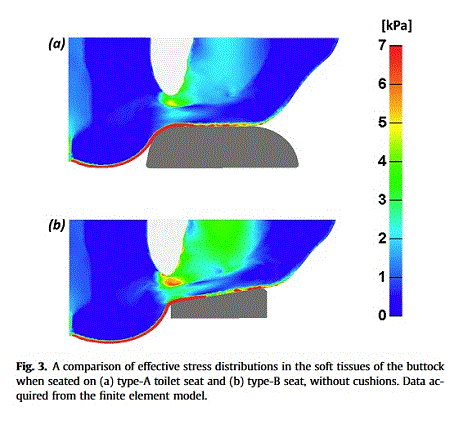
We found that prolonged sitting on toilet seats involves a potential risk for PrI (Pressure Injury) development, the extent of which is affected by the seat design.
This research is distinct from the 2000 Ig Nobel Public Health Prize, which reported injuries on people from toilets that could not withstand pressure from people on toilets. This research, instead, reports injuries on people from people not withstanding pressure from themselves on toilets.

October 9, 2017
Vampire bat taste-for-blood report “may have highlighted a serious health risk”
“Normally the ‘Ig Nobel Prize’ is awarded to researchers who have strange, silly, or unimportant scientific research, but this startling revelation — that the legendary vampire bat has a taste for our blood — may have highlighted a serious health risk for people living in Central and South America.”
— report by Arnold Carreiro, published in PJ, October 8, 2017
The 2017 Ig Nobel Prize for nutrition was awarded to Fernanda Ito, Enrico Bernard, and Rodrigo Torres, for the first scientific report of human blood in the diet of the hairy-legged vampire bat
REFERENCE: “What is for Dinner? First Report of Human Blood in the Diet of the Hairy-Legged Vampire Bat Diphylla ecaudata,” Fernanda Ito, Enrico Bernard, and Rodrigo A. Torres, Acta Chiropterologica, vol. 18, no. 2, December 2016, pp. 509-515.

“Will a vegetarian diet during pregnancy drive your child to drugs and drink”
This news article explores whether a particular science study corresponds to reality. The news article is “Will a vegetarian diet during pregnancy drive your child to drugs and drink?“, by Sharon Begley, published in Stat.
The science study itself is “Meat Consumption During Pregnancy and Substance Misuse Among Adolescent Offspring: Stratification of TCN2 Genetic Variants,” published in the journal Alcoholism. Figure three of that study is an image which some people might find thought-provoking, one way or another:

Becoming with sheep (art project)
Danish artist and researcher Charlotte Grumm explores (amongst other things) the constitutive relationship between subjectivity and materiality and the mattering and un-mattering of reality. With this in mind, the artist relates what she did in 2015 as part of this exploration :
“I, Danish artist Charlotte Grum, connected myself to a sheep for 5 weeks (5 hours a day, 5 days a week). The intention was to create a heterogenous relational and durational assemblage, intraacting and becoming-with the heath habitat, the other bypassing human and non-human animals, the changing weather and our fluctuating biological needs.”
A report about the project is published in the journal Performance Research, Volume 22, 2017 – Issue 2. See: Becoming with sheep – and with multiple others
Also see: The 2016 Ig Nobel Biology Prize which was awarded jointly to: Charles Foster, for living in the wild as, at different times, a badger, an otter, a deer, a fox, and a bird; and to Thomas Thwaites, for creating prosthetic extensions of his limbs that allowed him to move in the manner of, and spend time roaming hills in the company of, goats.

October 8, 2017
The Ig Nobel events, reported firsthand by a winning scientist
Dr. Marisa López-Teijón, leader of the team that won the 2017 Ig Nobel Obstetrics Prize — for showing that a developing human fetus responds more strongly to music that is played electromechanically inside the mother’s vagina than to music that is played electromechanically on the mother’s belly — describes what the team experienced during Ig Nobel week [this is an auto-translation into English; the original Spanish version, with additional photos, is on the team’s blog]:
I have just arrived from Boston and I want to share with you my joy for this award. It is an important recognition by prestigious universities and makes me especially excited because they try to bring science to everyone in an easy and fun way.
They treated us as if we were heroes of comics of scientific adventures, with respect and constant amusement. For example, before the Harvard ceremony we were shown the facilities but we were lined up with string, full of excitement and laughter.
To walk around the Massachusetts Institute of Technology they put stickers that put “IG NOBEL SPECIMEN” and the teachers and students did not stop asking us questions and asking for practical examples. The Korean physicist who studies fluid dynamics danced back imitating Michael Jackson carrying a cup of coffee in his hand (so do not spill !!).
The award-winning dinner was in the house of one of the teachers, absolutely endearing, even the soprano of the gala sang the happy birthday to the English researcher who studies the ears.
Some of us have the most developed sense of humor and all of this amuses us but others are very serious and really made an effort. But thanks to that the global impact on the media is amazing.

Squeezing the Data From Squeezing the Face (with added poison)
Should patients — after they have had poison injected into their face — then squeeze their face? If so, then how often, and exactly where? Those are the bundled questions this study tried to get at, with perhaps a hint that further attempts to answer the questions might be able to produce some hint of possible success of some kind:
 “A Comparison of Facial Muscle Squeezing versus Non-facial Muscle Squeezing on the Efficacy of BotulinumToxin-A Injections for the Treatment of Facial Dystonia,” P. O’Reilly, J. Ross, J. Norris, and R. Malhotra [pictured here], Orbit, vol. 31, no. 6, 2012, pp. 400-403. The authors, at Queen Victoria Hospital, East Grinstead, West Sussex, UK, explain:
“A Comparison of Facial Muscle Squeezing versus Non-facial Muscle Squeezing on the Efficacy of BotulinumToxin-A Injections for the Treatment of Facial Dystonia,” P. O’Reilly, J. Ross, J. Norris, and R. Malhotra [pictured here], Orbit, vol. 31, no. 6, 2012, pp. 400-403. The authors, at Queen Victoria Hospital, East Grinstead, West Sussex, UK, explain:
“Twelve patients underwent the non-squeeze / squeeze / non-squeeze protocol and the remaining 14 patients underwent the squeeze / non-squeeze / squeeze protocol. All patients experienced at least one treatment with and one treatment without performing post-treatment squeezing exercises….
“Although this study failed to demonstrate an enhanced effect of botulinum toxin-A with muscle contracture in a clinical setting, further studies looking at a more defined subset and larger number of patients could possibly lead to statistical significance.”
The authors also remark: “Although there is a theoretical risk of inadvertent spread of botulinum toxin-A with extensive muscle contraction, no such cases were demonstrated here.”

October 6, 2017
The Case of The Painful Burp and the Not-Painful Swallow
Pains in the mouth are not uncommon. What is somewhat more uncommon is a not-painful swallow with a painful burp. The case study, “The Wrong Toothpaste and The Painful Burp,” dives into this mystery for a 31-year old man.
To his surprise, there was only slight exacerbation upon swallowing, whereas burping triggered very severe pain with radiation to the ears, lasting approximately 5 seconds.
Researchers used techniques that involved examining an ulcer on his uvula and taking a video of the patient burping (with audio).

The uvula with the incorrect toothpaste use is on the left. The same uvula with correct toothpaste use is on the right.
Finally, the patient realized that he had accidentally been using a toothpaste containing sodium lauryl sulfate for a few weeks prior to symptom onset. He has not experienced any recurrences upon switching back to his regular toothpaste without sodium lauryl sulfate.
The full citation: Pareek, M. and Bhatt, D. (2017). The Wrong Toothpaste and the Painful Burp. The American Journal of Medicine, 130(1), pp.e19-e20.

October 5, 2017
Professor Bird (avian science expert)
If you’re seeking information about avian matters, who better to consult than the Director of the Avian Science and Conservation Centre (and Emeritus Professor of Wildlife Biology at McGill University, British Columbia,) Professor Bird.
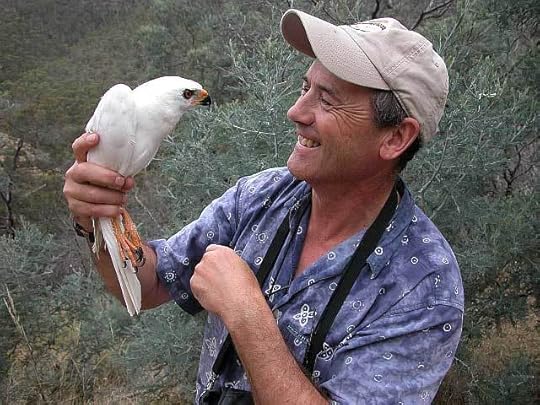
Previously, he was past-president of the Raptor Research Foundation Inc.; past-president of the Society of Canadian Ornithologists, past member of the board of directors of the American Birding Association; past member of the Board of Directors of Unmanned Systems Canada. He was also elected as a Fellow of the American Ornithologists’ Union in 1996 and as a Member of the International Ornithological Committee in1998. He has world-wide contacts in ornithology, and has organized two major conferences on birds and several symposia and workshops.
More info of Professor Bird here

Marc Abrahams's Blog
- Marc Abrahams's profile
- 14 followers


